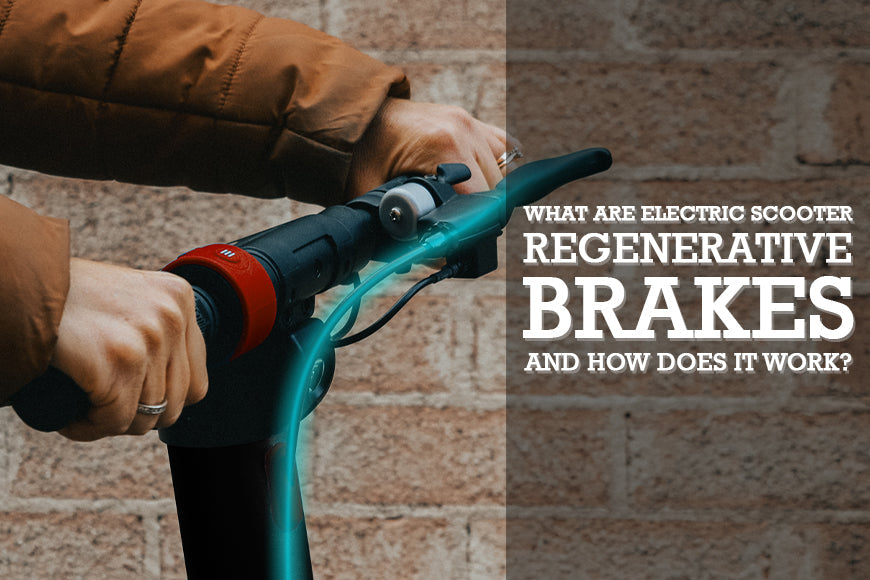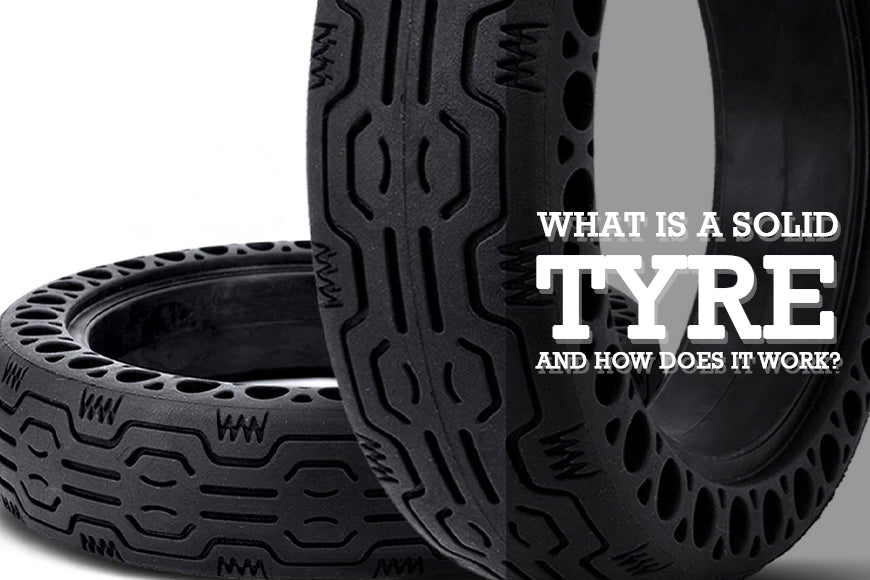
Electric vehicles make riding more efficient, eco-friendly, and affordable, making personal electric mobility devices a hit among commuters in recent years. Adult electric scooters, in particular, continue to dominate city streets due to their innovative transport solution.
Since it's fairly new in the market, e-scooters are still developing new technology to make personal travel more convenient, efficient, safe, and sustainable. One technology many e-scooters are starting to incorporate is electric scooter regenerative brakes.
When you browse through popular electric scooters online, plenty of e-scooters feature regenerative brakes with the promise of better efficiency and more range. However, what are regenerative brakes, and are they good for electric scooters and riders? Learn more about these electric scooter brakes in this guide.
What is an Electric Scooter Regenerative Brake?
Any moving vehicle gathers kinetic energy. When applying the brakes, all the kinetic energy needs to go somewhere. Regenerative braking uses the motor to convert the lost kinetic energy into stored energy in the battery when decelerating. So, when you accelerate again, it uses the stored energy from the regenerative brake before tapping in the new energy reserve.
How Does Regenerative Braking Work on Electric Scooters?
Before learning how regenerative brakes work, let’s first know how a regular vehicle braking system works. When you press the brake pedal in a regular car, it applies pressure to the hydraulic fluid, which activates the callipers to press the brake pads on the rotors to stop the vehicle. Electric scooter disc brakes work the same way. In this kind of system, the vehicle gathers kinetic energy and releases it into the environment.
However, an electric motor acts as a generator, which creates an electric current in the wire windings. A regenerative braking system is designed to retrieve the current generated by the motor when decelerating and put it back into the battery. As a result, you get an energy-saving braking system that ideally helps extend your range.
The Benefits of Regenerative Braking
Below are the two major advantages of using regenerative brakes.
-
Saves Battery Energy
A well-implemented regenerative braking system helps save battery energy and improve your braking efficiency. The saved energy is used to prolong the battery’s life, resulting in a longer range. It’s a helpful braking system for those who are always on the go, as they can save more battery energy while travelling.
-
Reduces Wearing of the Brakes
An efficient braking system reduces the level of wearing on the e-scooter brakes. It helps extend the life of cables and brake pads, which needs regular maintenance and replacement to keep your brakes effective.
These parts wear down easier since e-scooters travel faster and further than traditional kick scooters. As a result, e-scooters with regenerative brakes are slightly easier to maintain.
The Downsides of Regenerative Braking
Here are the disadvantages of regenerative braking systems. Consider these cons when choosing an e-scooter with regenerative brakes.
-
Captures Little Kinetic Energy
Unfortunately, this braking system captures only a small amount of kinetic energy when decelerating. A 100kg rider riding at 30 kph produces 3,400 joules of energy, which is just a small fraction of an average battery. It only amounts to a running time of around 15 seconds or 120 metres when you use this energy.
-
Provides Inadequate Braking Power
This one offers little stopping power among all the braking systems used in e-scooters. Regenerative brakes don’t stop the e-scooter quickly, making them slightly unsafe for emergency braking. Although the braking can be strong at first, it fades quickly. Moreover, regenerative brakes only work well when you are riding at a fast speed.
Is Regenerative Braking Bad?
Overall, regenerative braking offers good and bad points that riders should know. They offer great battery efficiency and help maintain your brakes. However, they don’t produce enough stopping power and capture little kinetic energy, depending on the speed you’re going.
Given the cons of regenerative brakes, many e-scooters combine them with other braking systems, like disc brakes and foot brakes, for extra protection. It is not reliable on its own, but it is a good addition to your e-scooter’s overall efficiency if you choose to get an e-scooter with regenerative brakes.
Should You Get Regenerative Brakes?
The best way to know if you need regenerative brakes is to look at your travel needs. If you need daily personal transport, having regenerative brakes will help save more battery energy, even if it’s just a little.
However, if you only need an e-scooter for occasional rides, save on the retail cost by not opting for regenerative brakes. E-scooters with this braking system are slightly more expensive, so consider the additional expense if you prefer getting regenerative brakes.
Learn more about the other braking systems in this beginner’s guide to electric scooter brakes. Check out Mearth’s blogs for more e-scooter guides, tips, and news.




Leave a comment
This site is protected by hCaptcha and the hCaptcha Privacy Policy and Terms of Service apply.